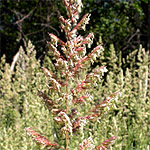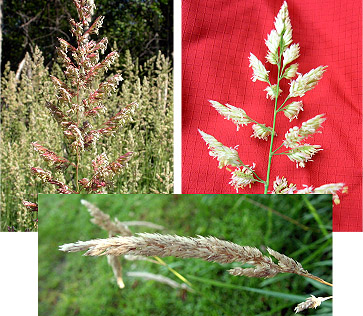Reed Canary Grass
 Phalaris arundinacea
Phalaris arundinacea
Reed Canary Grass can dominate wetlands for decades, preventing other species from growing.
Origin
Botanists believe there are both native and non-native types of this plant. The non-native type comes from around the Mediterranean. It was introduced into North America by European settlers.
Status
Reed Canary Grass is found throughout North America, including Manitoba. It is almost impossible to tell the native and non-native plants apart.
Impacts
Reed Canary Grass prevents other species from growing and reduces biodiversity.
Where to Look
This plant lives in wet meadows, wetlands and along streams. It is often seen in the same areas as Purple Loosestrife.
Identification
Leaves: flat, greyish-green, 9 to 25 cm long. They are often rough on both surfaces.
Stems: light green to straw colored, hairless and hollow.
Flowers: purplish and grow in dense, branching clusters.
Â

Â
Reed Canary Grass ISCM Fact Sheet
2011 Rural Municipality Distribution Map
2010 Rural Municipality Distribution Map
Â
Back to Aquatic Invasive Species List
Â

